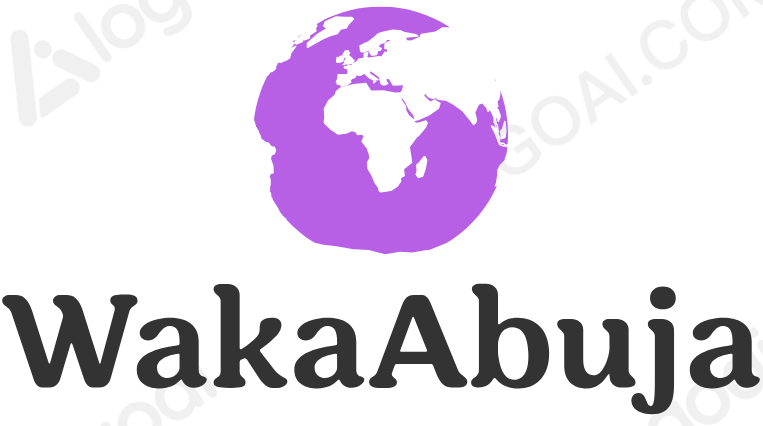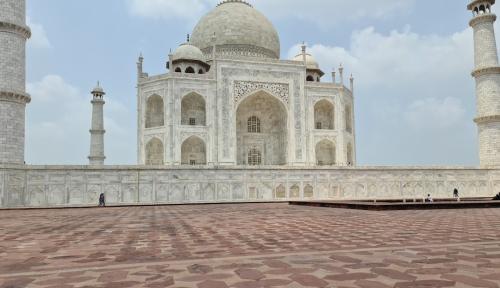With a rich cultural diversity, ancient traditions, and a wide range of experiences, India abounds in awe-inspiring experiences. There’s something for everyone in India, whether you’re looking for a spiritual journey, an adventure through bustling cities, or a peaceful escape. To make your trip smoother and more enjoyable, here are a few things you should know before you pack your bags. From visa requirements to cultural norms, here are the essential tips for visiting India.
1. Visa Requirements
When planning a trip to India, obtaining the right visa is essential. India’s visa policies vary depending on your nationality, purpose of travel, and duration of stay. Thankfully, India offers several options for international travelers.
Types of Visas
- Tourist Visa: This is the most common type for short-term visits (usually 6 months). Depending on your nationality, you can apply for a tourist visa either online (e-Visa) or through an Indian embassy.
- e-Visa: Travelers from over 160 countries, including the United States, the UK, and several European nations, can apply for an e-Visa, which is valid for 60 days and allows for double or triple entries. You can apply for it online up to 120 days before your travel date.
- Business Visa: If you’re traveling for business purposes, you can apply for this visa, which is typically valid for 6 months or longer.
- Medical Visa: If you are visiting India for medical treatment, a medical visa is required. You must provide the necessary documentation from an accredited Indian medical institution.
Visa Fees and Processing
The cost of a visa depends on your nationality, the type of visa, and its duration. For example, the tourist e-Visa for U.S. citizens costs around $10 to $100, depending on the duration of stay and number of entries.
Visa Fees Example (For U.S. Citizens):
| Visa Type | Duration of Stay | Fee (in USD) |
|---|---|---|
| e-Visa | 60 days | $10-$100 |
| Tourist Visa | 6 months | $80 |
| Business Visa | 1 year | $100 |
To apply, you’ll need your passport (valid for at least 6 months beyond your planned stay), recent passport-sized photographs, and the application fee. Processing can take anywhere from 3 to 7 business days, so make sure you apply in advance.
Useful Links:
2. Best Time to Visit
India is a year-round destination, but the best time to visit depends on the region you are traveling to and the type of experiences you’re seeking. Here’s a breakdown:
North India:
The best time to explore cities like Delhi, Agra, Jaipur, and Varanasi is between October to March. The weather is pleasant, with cool temperatures and low humidity, making sightseeing enjoyable. However, this is also peak tourist season, so expect larger crowds and higher prices.
South India:
In southern cities like Chennai, Bengaluru, and Kerala, the weather is tropical, and you’ll want to visit during the cooler months of November to March. The coastal areas are best experienced during this time, avoiding the monsoon season (June to September).
Hill Stations:
If you plan on visiting the hills, like Darjeeling, Shimla, or Manali, the summer months (April to June) are ideal, as temperatures are moderate. Winters (November to February) offer opportunities for snow-related activities.
Monsoon Season:
The monsoon season, from June to September, is characterized by heavy rainfall, which can disrupt travel plans. However, if you love the rain and want to see lush landscapes, this can be a beautiful time to visit. Just be prepared for soggy conditions and occasional flooding in certain areas.
3. Traveling Around India
India’s sheer size and diversity mean that there’s no one-size-fits-all approach to getting around. Here’s a guide to the best modes of transportation:
Domestic Flights:
India is vast, and domestic flights are often the most time-efficient way to travel long distances. Airlines like IndiGo, Air India, and SpiceJet offer budget-friendly options for travelers. Prices start at approximately ₹2,000 ($25) for a one-way flight between major cities.
Trains:
India’s railway network is one of the largest in the world, offering a variety of experiences—from budget sleeper cars to luxurious trains like the Palace on Wheels. Train travel is affordable, with prices ranging from ₹150 ($2) for short distances to ₹2,000 ($25) for longer journeys in first-class compartments.
Buses:
Traveling by bus is common and affordable. The government-run State Transport Corporations and private bus operators like VRL and KSTDC cover all major routes. For long-distance travel, expect to pay ₹500–₹1,500 ($6-$20).
Taxis and Rickshaws:
Taxis are a comfortable option for short trips, especially in cities like Delhi and Mumbai. Ola and Uber are widely available in most cities and offer competitive prices. Expect to pay around ₹100–₹300 ($1.50–$4) for short rides.
Pro Tip: Always agree on the fare before getting into a taxi or rickshaw, or use ride-hailing apps to avoid misunderstandings.
Local Transport:
For a more authentic experience, hop on a cycle rickshaw or auto-rickshaw. Prices vary, but always make sure the driver turns on the meter or negotiate a price beforehand.
Google Maps and Uber are reliable tools for navigating and checking distances.
4. Currency and Money Tips
Currency:
The official currency of India is the Indian Rupee (₹). While credit and debit cards are widely accepted in major cities, you’ll still need cash for smaller towns and rural areas. It’s a good idea to carry both, especially for places like markets, street food, and rural locations.
ATMs and Currency Exchange:
ATMs are plentiful in cities and offer a convenient way to withdraw money. However, be aware of foreign exchange fees when using international cards. Currency exchange booths and banks are also available in most cities and airports, but they tend to offer less favorable rates than ATMs.
Pro Tip: Avoid exchanging large sums at airports, as they typically offer poor rates.
| Currency Exchange Location | Exchange Rate (₹ per $1) |
|---|---|
| Airports | ₹82–₹85 |
| Local Exchange Bureaus | ₹81–₹83 |
| ATMs | ₹80–₹84 |
Tipping:
Tipping in India is customary in many places. For instance, restaurant service charges are often included, but additional tips of 10-15% are appreciated. For taxi drivers, a small tip (around ₹20–₹50) is also common.
5. Ideal Duration for a First-Time Visit
The duration of your stay in India depends on how much of the country you want to explore. For a first-time visitor, I recommend staying at least 10 to 14 days. This gives you enough time to explore key regions, such as the North (Delhi, Agra, Rajasthan) and South (Kerala, Goa, Chennai).
If you have more time, you can expand your trip to visit remote locations like Ladakh, Rishikesh, or Varanasi.
Sample 2-Week Itinerary:
- Day 1-3: Delhi (Visit Red Fort, Humayun’s Tomb, India Gate)
- Day 4-5: Agra (Taj Mahal, Agra Fort)
- Day 6-7: Jaipur (Amber Fort, Hawa Mahal)
- Day 8-10: Kerala (Backwaters, Kovalam Beach)
- Day 11-14: Goa (Beaches, local markets)
6. Language and Communication
India is a multilingual country with 22 official languages and several hundred dialects. However, Hindi and English are the most widely spoken and understood languages, especially in urban areas.
Learn a Few Words:
While English is commonly spoken in tourist areas, learning a few basic phrases in Hindi or the local language can go a long way. For example:
- Namaste (Hello)
- Shukriya (Thank you)
- Kitna hai? (How much is it?)
SIM Cards and Connectivity:
SIM cards are easy to obtain at the airport or mobile stores in major cities. Popular providers include Airtel, Jio, and Vodafone Idea. Expect to pay ₹300–₹500 ($4–$7) for a prepaid SIM with 30 days of data.
7. Cultural Etiquette and Behavior
Understanding India’s cultural norms is crucial for respectful and enjoyable interactions. Here are some tips:
- Dress Modestly: In rural and religious areas, dress conservatively. Women should avoid wearing revealing clothes, especially in temples.
- Respect Religion: India is a land of diverse faiths, and religious beliefs are taken seriously. Always remove your shoes before entering temples and mosques, and never touch religious statues.
- Public Displays of Affection: Public displays of affection, such as kissing or hugging, are frowned upon in many parts of India.
8. Health and Safety
Vaccinations:
Before traveling to India, check with your healthcare provider about necessary vaccinations. Recommended vaccines include Hepatitis A and B, Typhoid, Tetanus, and Malaria prophylaxis.
Health Insurance:
Travel health insurance is highly recommended. Ensure that it covers medical expenses and emergencies during your trip.
Safety Tips:
- Always keep an eye on your belongings in crowded places.
- Avoid traveling at night in unfamiliar areas.
- Use reputable transportation options, especially in busy cities.
9. Shopping and Souvenirs
India is a shopper’s paradise with everything from traditional handicrafts to high-end designer goods. Here are some popular souvenirs to take home:
- Sarees: Indian silk and cotton sarees are beautiful and a great souvenir.
- Spices: India is famous for its aromatic spices like cardamom, cinnamon, and saffron.
- Tea: Bring back authentic Darjeeling or Assam tea.
- Handicrafts: Look for handmade items such as wooden carvings, pottery, and jewelry.
10. Connectivity and FAQs
Q1: Is it safe to travel around India alone?
Yes, but always take basic precautions like avoiding poorly lit areas at night and keeping your valuables safe.
Q2: Do I need to tip in India?
Tipping is customary but not mandatory. It’s appreciated, especially for good service.
Q3: What should I pack for a trip to India?
Pack light, breathable clothes, a good pair of shoes, sunscreen, a hat, and essential toiletries.
Final Thoughts
India is an incredible destination that offers endless adventure, culture, and natural beauty. By understanding the country’s visa requirements, knowing when to visit, and being prepared for cultural differences, your journey can be both safe and enriching. Whether you are marveling at the Taj Mahal, sipping chai on the streets of Delhi, or exploring Kerala’s backwaters, India will captivate your soul.
Traveling to India is not just about sightseeing; it’s about embracing new cultures, trying exotic foods, and connecting with people. With these essential tips, you’re ready for an unforgettable adventure.











